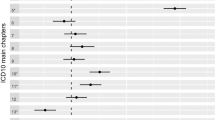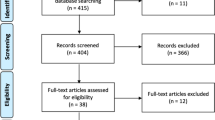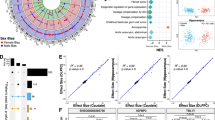Abstract
THE incidence of schizophrenia in most communities is of the order of 1 per cent. Yet the fertility of schizophrenic males is low, as noted by Huxley et al.1; and it has since been established that the fertility of schizophrenic females is low, too2. The second observation serves to strengthen the suggestion of Huxley et al. that the fertility of schizophrenics seems too low for the disorder to be maintained at its present rate by mutation alone. In explanation they noted the resistance of schizophrenics to surgical and wound shock, to visceral perforation, to high doses of histamine, insulin and thyroxine, and to pain. They noted also the possibility that schizophrenics may be resistant to diseases such as smallpox and bubonic plague which have occurred in widespread epidemics.
This is a preview of subscription content, access via your institution
Access options
Subscribe to this journal
Receive 51 print issues and online access
$199.00 per year
only $3.90 per issue
Buy this article
- Purchase on SpringerLink
- Instant access to full article PDF
Prices may be subject to local taxes which are calculated during checkout
Similar content being viewed by others
References
Huxley, J., Mayr, E., Osmond, H., and Hoffer, A., Nature, 204, 220 (1964).
Stevens, B., Brit. Med. J., 4, 22 (1969).
Moran, P. A. P., Nature, 206, 1111 (1965).
Terris, M., Lapouse, R., and Monk, M. A., Amer. J. Psychiat., 121, 476 (1964).
Winokur, G., Guze, S. B., and Pfeiffer, E., Amer. J. Psychiat., 115, 1097 (1959).
Author information
Authors and Affiliations
Rights and permissions
About this article
Cite this article
JAMES, W. Schizophrenia as a Genetic Morphism. Nature 225, 1153 (1970). https://doi.org/10.1038/2251153a0
Received:
Revised:
Issue date:
DOI: https://doi.org/10.1038/2251153a0



